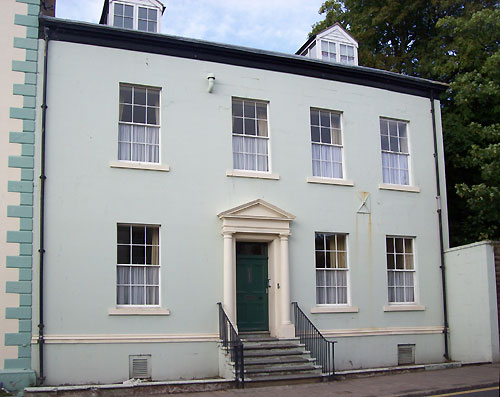
Whitehaven's Lowther Street could be considered the spine of the town with the other streets either parallel or at right angles. This broad thoroughfare runs from Strand Street all the way to Lowther's grand house, now known as Whitehaven Castle, after which the road becomes Flatt Walks and then the road to Egremont. To create this street John Lowther had to remove the existing chapel against the wishes of some existing residents and create a new church dedicated to St. Nicholas which still forms the centrepiece of the town.

The house nearest to Lowther's Castle is this well proportioned but modest two storey town house built in Georgian style with a classical inspired doorway. It was built sometime in the 18th century. It is slightly set back from the street with raised above street level with a set of 7 steps and originally would have had railings set into a low perimeter wall - all this would have afforded some privacy to its occupants.
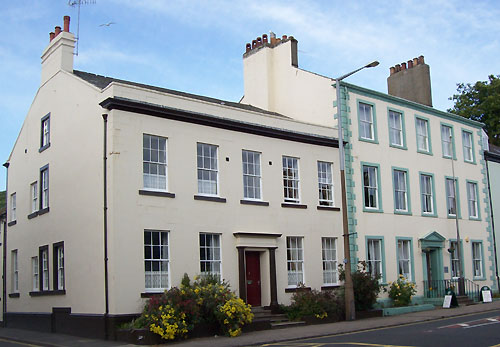
The fine house on the corner with Catherine Street was built in the first half of the 19th century by Joseph Bell who also built the huge mill on Catherine Street. By the end of that century it had become the residence of Sir Augustus Helder (1827-1906) the Conservative M.P. for the constituency of Whitehaven between 1895 and 1906. He was a local solicitor and also in partnership with William and Isaac Fletcher of Frizington building ships in Sunderland.
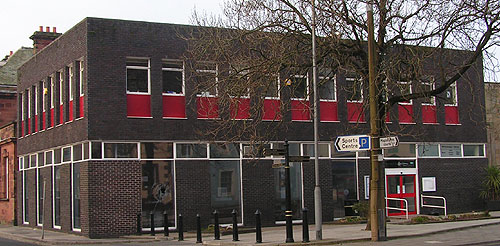
The modern extension to the library was opened at the beginning of 1970. It is seen here before the recent revamp of the paved area outside the front of the building.
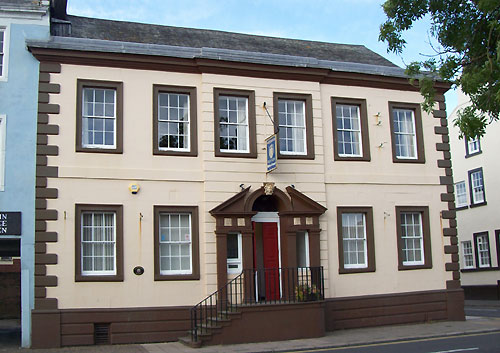
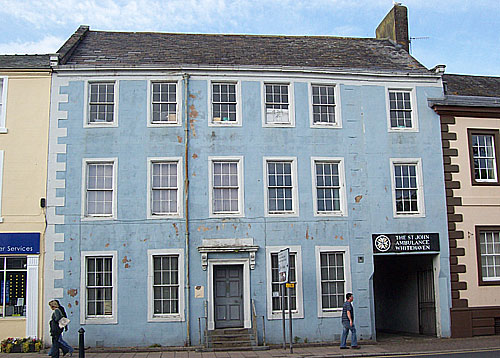
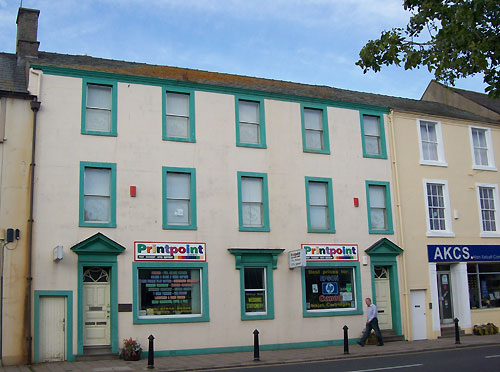
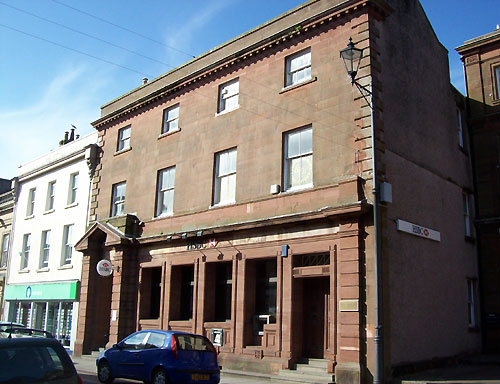
The HSBC Bank formerly the Midland Bank was before that the Cumberland Union Bank. However, the site was originally purchased by the apothecary Richard Senhouse, Whitehaven's principal doctor, who built a house beyond his means in 1705, and not being able to pay the mortgage it was acquired by Thomas Lutwidge in 1710.
Thomas Lutwidge (1670-1746) came to Whitehaven from Ireland in 1691. He traded in tobacco possibly making extra money by smuggling it into Scotland and claiming back the tax by exporting it to the Isle of Man. He also built St. Bees lighthouse at his own expense claiming back a levy on all ships using the West Cumbrian ports. He married Lucy Hoghton in 1721, the daughter of a Baronet. The youngest of his 10 children was Skeffington Lutwidge named after the maiden name of his mother-in-law. Skeffington became Admiral of the Red in 1810 after a distinguished career that included commanding the young Horatio Nelson on a trip to the Arctic aboard Carcass. His business failed after, amongst other things, the loss of one of his ships and he fled his creditors back to Ireland around 1741.
In 1801 the house was sold back to the Senhouse family in the form of Sir Joseph Senhouse.
Sir Joseph Senhouse had had an interesting life. He had been educated at boarding school in Whitehaven. He started his career as a sailor trading/smuggling on a least four voyages to India. He then joined his brother William who was Surveyor general of Customs in Barbados under the patronage of Sir James Lowther. Joseph went to Dominica in 1771 and by 1774 was Comptroller of customs. For a while he also had a small plantation growing coffee. He returned to England and became Lowther's man in Carlisle where he eventually became Mayor.
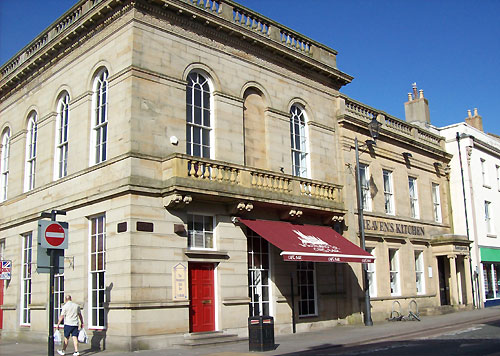
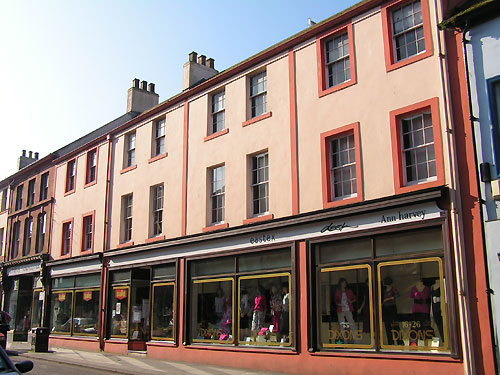
Dixons store in Whitehaven grew as a family business throughout the 20th century. As it grew local properties were absorbed and an extension built across Fox Lane at the back, resulting in a superstore that has maintained this Georgian appearance on Lowther Street yet has a huge amount of floor space inside selling clothing and furniture.
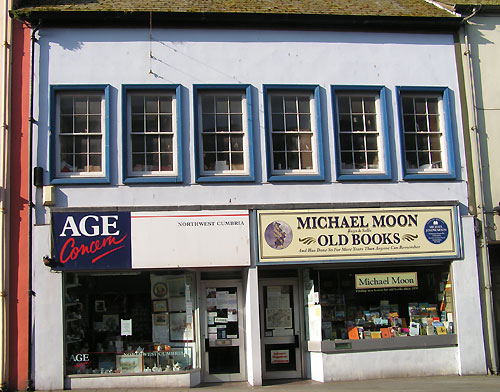
Previously on Roper Street on the site of the old theatre Michael Moon's famous antiquarian bookshop now occupies this more prominent location on Lowther Street. Whilst the shop appears quite small at first glance it extends behind and upstairs into a labyrinth of rooms and thus contains thousands of books. As well as selling books, Michael Moon has also been responsible for publishing many books on local history and saving lost volumes through reprints thus promoting the interest in Whitehaven's fascinating history.
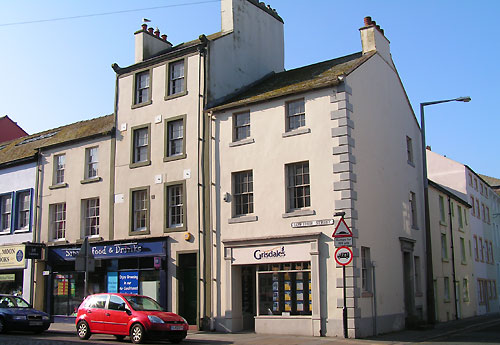
Grisdales estate agents on the corner with Queen Street appears to be another house that had its main door around the corner but after conversion to a shop now also has a front entrance. It is interesting how the off-licence next door occupies two traditional Georgian houses. Unusually for a building not on a corner, one of these rises to four storey's.
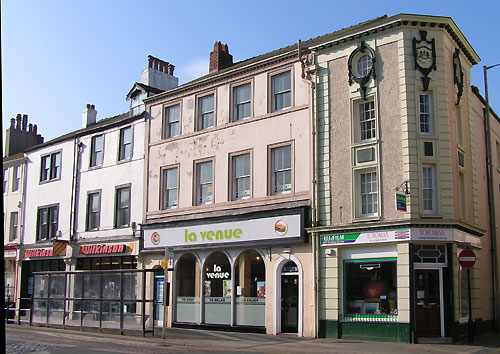
Wilkinson's is another superstore that has fortunately been incorporated into the Georgian frontage. Unfortunately, when it was originally built as a new co-op store virtually the whole block between Queen Street and Church Street was replaced by a modern building thus destroying a whole side of each street as well as Roper Street. La Venue cafe has arched windows to reflect the doors on either side and the upper storeys appear untouched. The building occupied by Fotomax as with many corner building has a more flamboyant style with some highly decorated round windows on the upper storey.
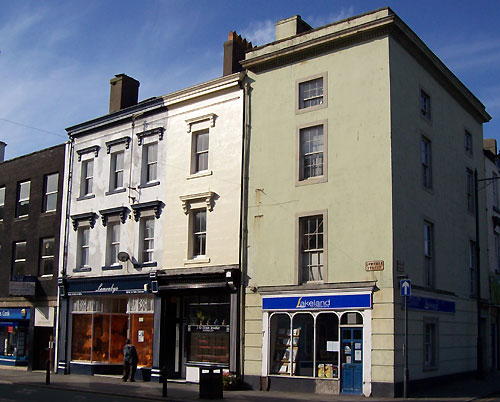
Lakeland cleaners on the corner with Church Street occupies a four storey building that is unusually plain but does rise to a fourth storey.
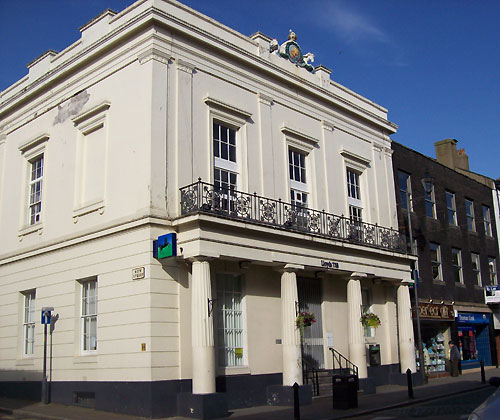
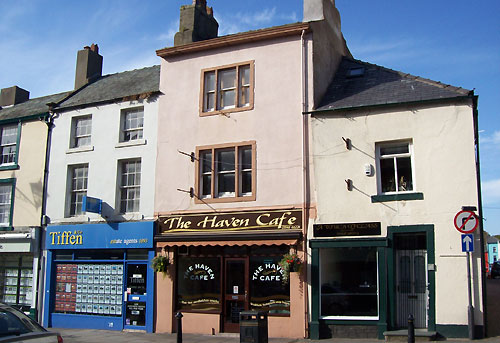
It is interesting to note that these shops are built into much smaller houses that those at the other end of Lowther Street - one can surmise that the richer more influential people chose to live nearer the Castle.
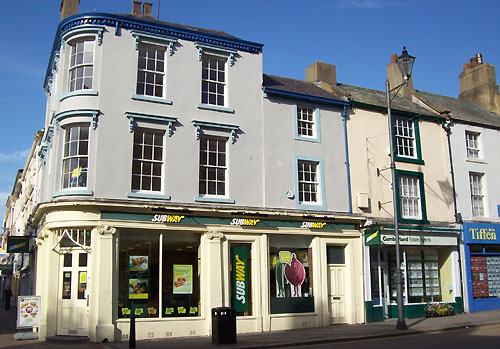
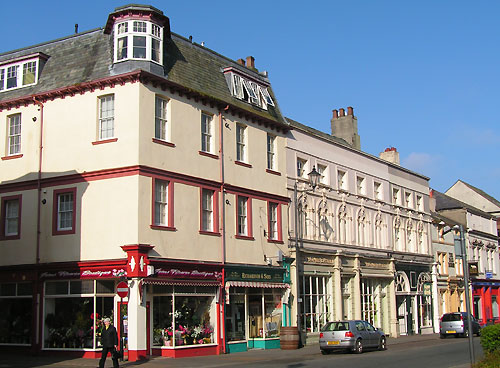
Jeans Flowers on the corner and Richardson's Wine shop occupy another corner building that rises to four storeys but the top floor occupies an attic built into the roof with dormer windows and an elaborate bay on the corner.
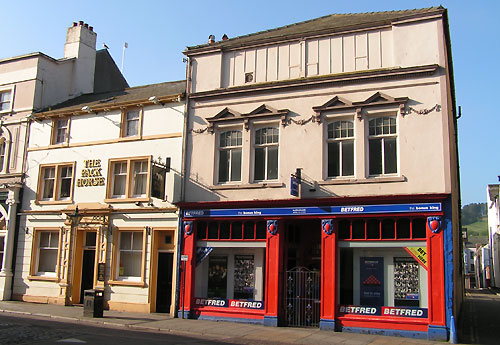
The Pack Horse public house is a good name for another of the Whitehaven's old coaching inns.
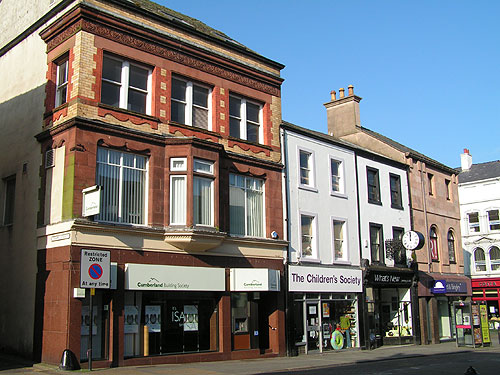
The Cumberland Building Society building has an interesting facade. The ground floor has a modern polished stone covering and large plate glass windows. The second floor has a red sandstone covering with a large bay window. The third floor is covered with decorative brick work which beneath the windows mimics the sandstone carving of the windows below and is surmounted by a carved sandstone freeze around the top. All this stops abruptly just around the corner on Chapel Street where the wall becomes plain plaster. Also on the corner is a large stone stob designed to prevent vehicles from clipping the corner.
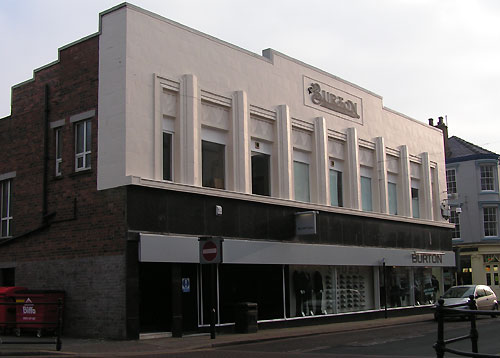
Built in 1933 the Burton's store is one of the few Art Deco buildings in Whitehaven. The Lowther Street facade bears the Montague Burton logo. On Strand Street it can be seen how the building is staged up to the front to make it look larger and more impressive.
© WAWL 2009